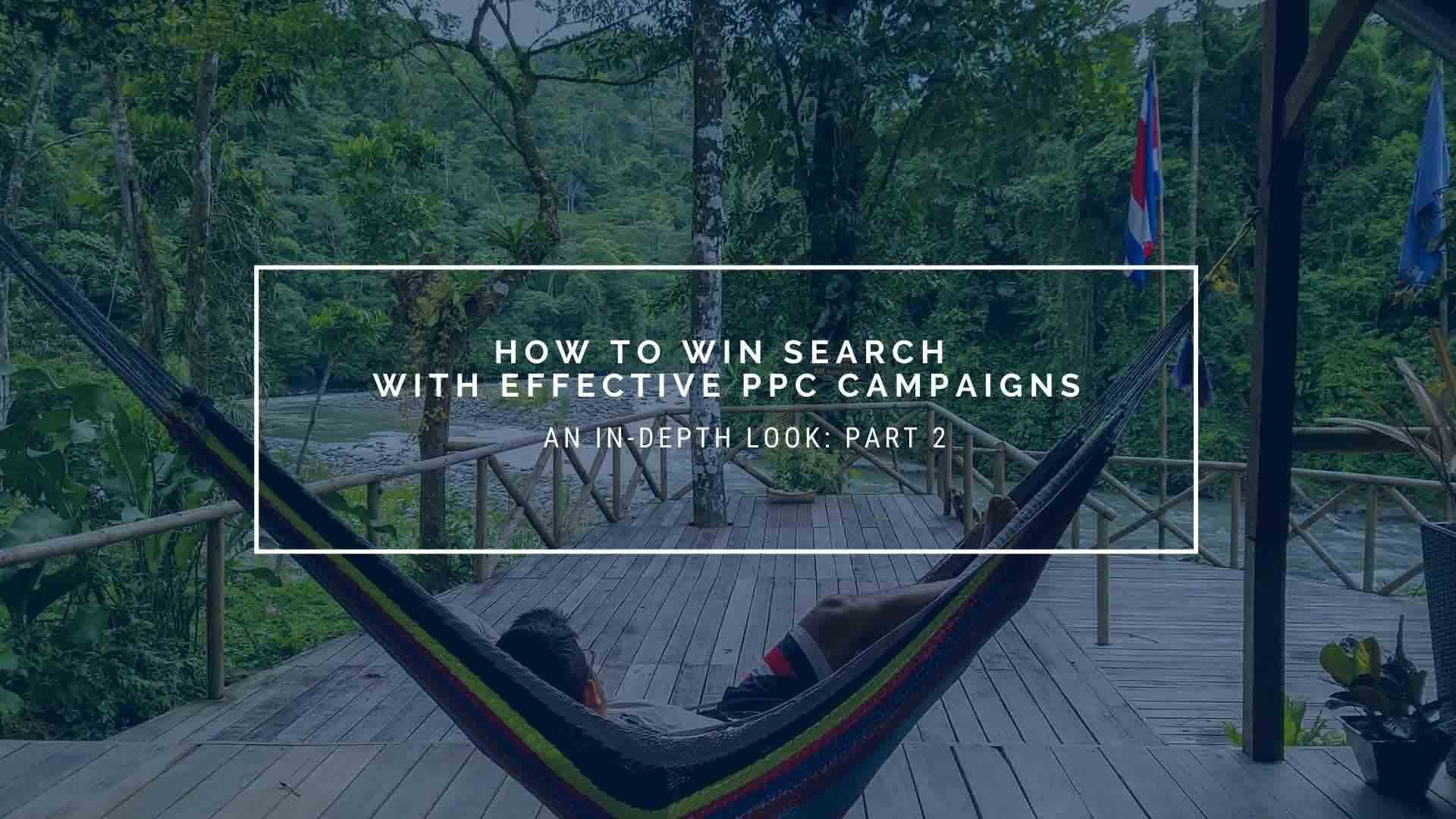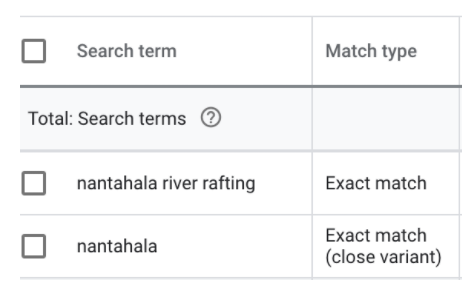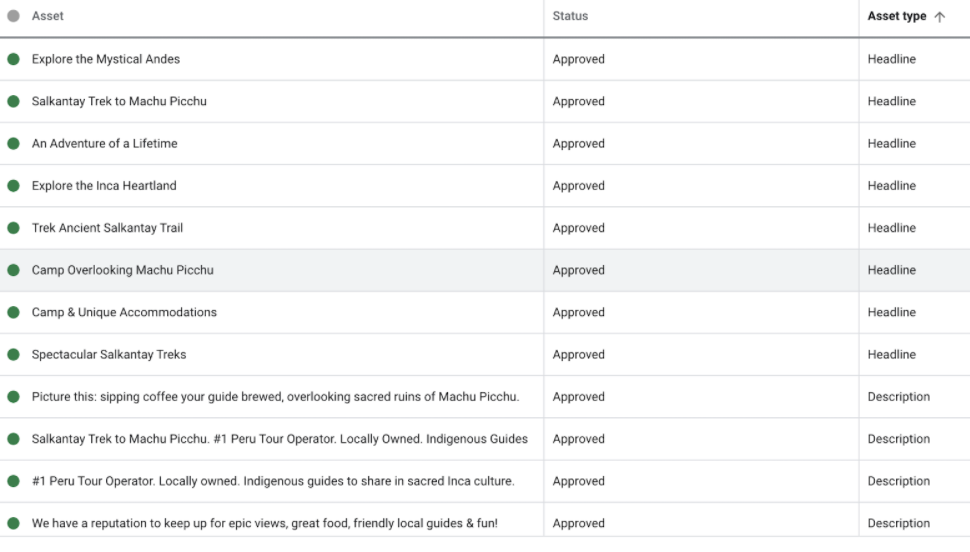
How to Win Search with Effective PPC Campaigns – Part 2
Keywords, Match Types, Quality Score, Search Ad Types
Search engine marketing with paid ad campaigns (also called PPC ads for Pay-per-Click advertising) is the fastest way to the top of search results in Google. At the time of writing this article, Google is still the heavyweight search engine in the world, excluding Baidu in China. In Part 1 of our series on How to Win Search with Effective PPC Campaigns, we covered 3 key foundational elements: ad placement strategy, the importance of the right goals and conversions, and how geographic targeting can make or break your ad budget.
Now, in Part 2, we focus on the corner post of effective PPC campaigns – keywords. This includes keyword match types, negative keywords, and quality scores. We then share how to test and use those keywords effectively in both expanded and responsive search ads. Time and time again, we see businesses waste money through poor keyword selections, using broad match types that waste ad clicks from the wrong users, and not understanding the importance of adding in the right negative keywords. Let’s dig in!
Keywords and Negative Keywords
It’s important to understand how keywords are used and Google’s recent expansion of what they consider “close variants” of keywords. Note that Google highly favors seeing a tight alignment of keywords, ad copy, and landing pages. This is because if searchers don’t immediately see a reference to what they are searching for when they land on your page from an ad, they will bounce from that landing page. Google will flag that bounce as a poor experience for your ad.
Close Variations: In the fall of 2019, Google expanded what they consider a “close variant” of a keyword. For example, let’s say you want to advertise for rafting trips in the state of Colorado, but you only operate on various Colorado-located rivers, but not the actual named Colorado River. You might not want to compete with Grand Canyon outfitters or Moab, UT outfitters that operate on various sections of the Colorado River. Being smart about what actual and related keywords your ad can trigger for, and using negative keywords effectively, will help you target better and not waste budget on the wrong clicks.
In the example below, Google has determined that the generic nantahala query is a close variant for nantahala river rafting queries. This could be a problem, because there are many other nantahala queries that have nothing to do with rafting that people could be searching for. Examples could include Nantahala Forest, Nantahala Lake, Nantahala cabins, etc.

You need to regularly monitor your search term reports to ensure Google hasn’t been too broad in their interpretation of what it thinks might be relevant for your business. You may have to add new negative keywords at times to prevent wasted spend on keyword variants that Google thinks are okay, but you know are not relevant for your business.
Modified Broad Match
Most Google Ads experts favor modified broad match keywords over original broad match keywords. They do this because without adding the modified + sign in front of your keywords, you can’t control which word can trigger your ad. For example, if you use potomac river rafting in a broad match environment, Google could show your ad to anyone looking for Potomac, or for river, or for rafting, either together with any other word or by itself. By using modified broad match, such as +Potomac +river +rafting, you can indicate to Google with a + sign, which words that must be in the search terms you trigger on. You still need to watch out for close variants.
Keyword Quality Score
Quality score is a feature within Google Ads that measures how well a keyword is doing. The score, measured on a scale from 1-10, is composed of 3 major elements:
- Expected Click Thru Rate (CTR) – How often Google thinks someone will click on your ads.
- Alignment – Seeing the theme between the ads, keywords, and landing pages.
- User Experience – What actions do people take when they get to your landing page? If they bounce (leave the page immediately) that’s a terrible sign for Google. If people seem engaged on the site and perhaps buy, Google will see that favorably, and show your ad more often.
Generally, the higher the quality score, the better. There are some situations where lower quality scores can still be okay, based on your audience goals. People may ask for similar things using the same search terms, yet only one of those things may be relevant to your business. This is where you will want to make sure your ad copy helps the reader understand what you offer and where, so that you’re not paying for clicks that aren’t going to lead to sales. High quality scores are always a goal, but are not an absolute requirement 100% of the time.
Here’s an example: You have an adventure ranch in the mountains of Baja California Sur, but it doesn’t offer ocean-based adventures. You know that you will want to target the general term +Baja +California +Sur +vacations, but are concerned you will get clicks by users looking for beach vacations. To help mitigate this, you will want your ad copy to talk about mountains and ranch. This way, users looking for beach vacations will be less likely to click on your ad. Some will, and that will bring your quality score down if they come to your site and bounce off right away.
Your target quality score should be 7 to 10. However, there are some situations where that is not possible, particularly in competitive markets with aggressive competitors.
Here is an example of quality score related to 3 elements—expected CTR, landing page experience, and ad relevance— found in keyword reports. Note that you may have to modify your reports to show quality score information.

For your high volume, high intent keywords, the highest performing ads generally will have those terms in your ad headlines. In fact, Google highlights the terms in your ads.
Ad Strategy
When you see search ads on a desktop or mobile device, you can see headlines and descriptions displayed. Display ads have responsive templates as well as fixed dimension templates that include a mix of video and/or images. We’re focusing on search ads in this article.
Search Ads: Ad Types – Expanded and Responsive
In search, Google allows you to set up 3 types of ads:
- Expanded ads, with 3 headlines and 2 descriptions
- Responsive ads, with up to 15 headlines and 5 descriptions
- Call only ads (which we aren’t covering in this article)
However, when showing either expanded or responsive ad types, Google may only display 1 or 2 headlines and only 1 description, based on what Google thinks is the searcher’s intent. Best practices are to create 3 or 4 expanded ads and 1 responsive ad.
Responsive ads allow more headlines and descriptions than expanded text ads, so they are the natural place to test headline and description variations. That’s why you want to use them! Google controls how many headlines and description lines will show on either mobile or desktop and reports on how often each version is shown. Use that data to help you craft better performing expanded ads on an ongoing basis.
See below for an example of responsive ad results by headline and description:

In Conclusion
Winning search with effective PPC campaigns requires a strong technical understanding of how Google Ads works, in addition to a strong business understanding of your target customers and market locations. Dialing in your keywords, including close variants, negatives, and match types will help you immediately reduce wasted budget spend. Understanding what keywords to use in your search ads, and how to test your headlines and descriptions, will help you continuously improve the performance of your PPC campaigns.
Next up in our series on How to Win Search with Effective PPC Campaigns – Part 3, we’ll cover ad extensions, landing pages, bidding strategies, budget setting, and auction insights. You won’t want to miss it!
Want more details on how to win local search for your business? See our guest post on Search Engine News: 11 Tips to Bring a Flood of New Clients to Your Local Business Using Targeted PPC Campaigns
